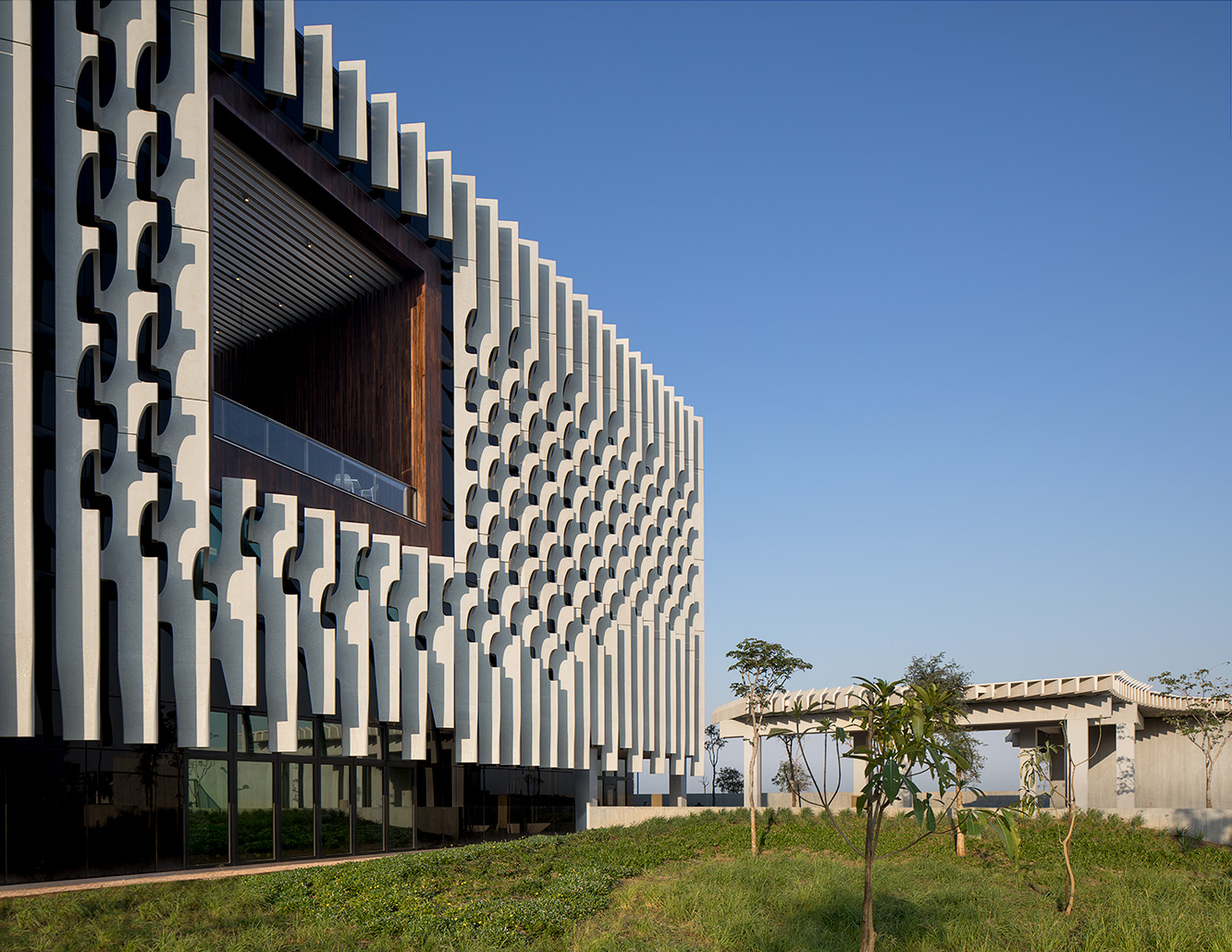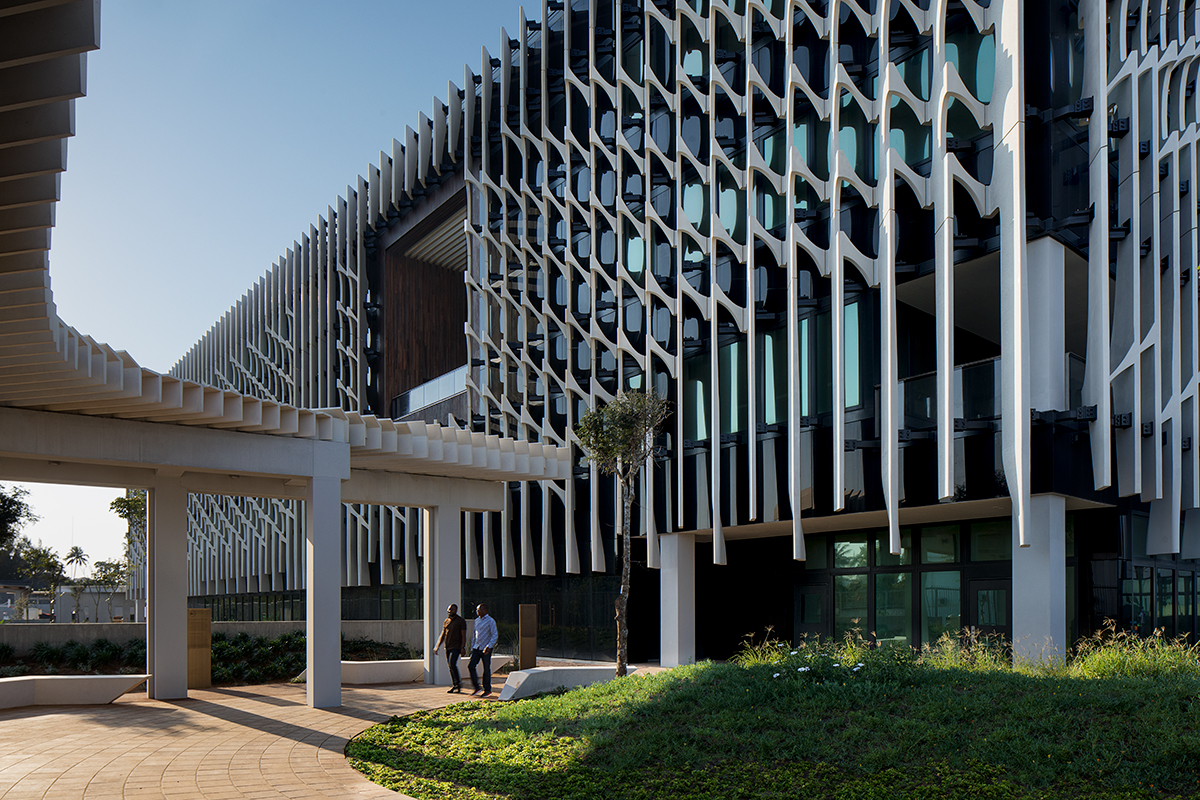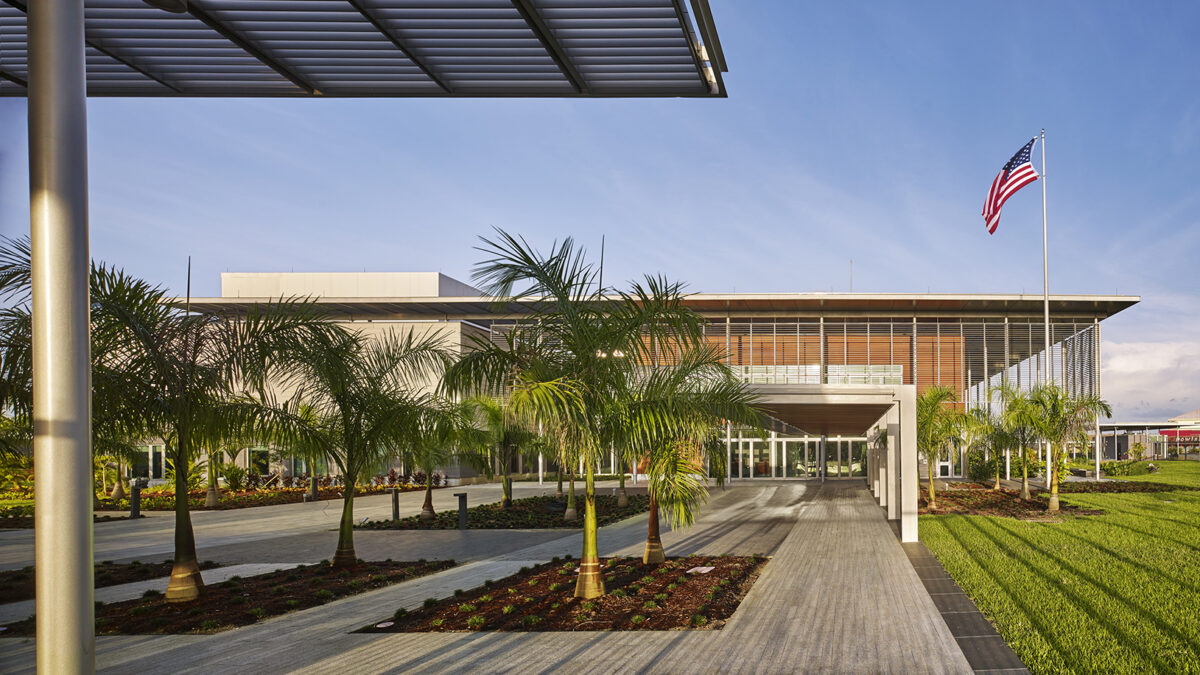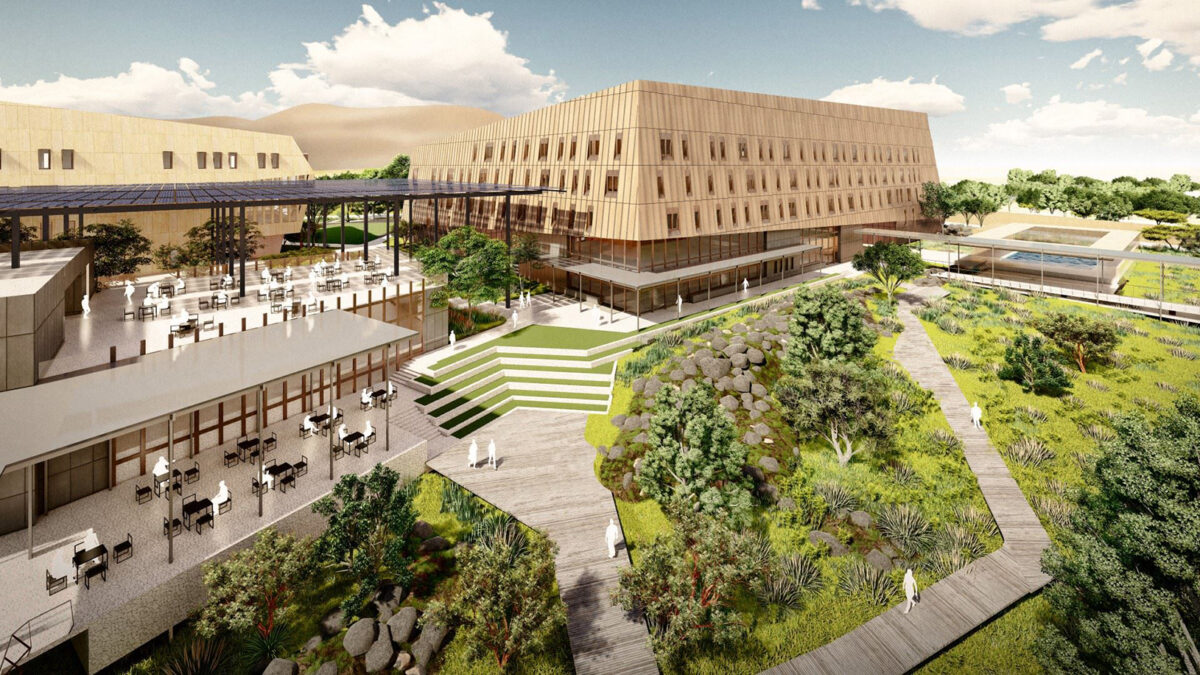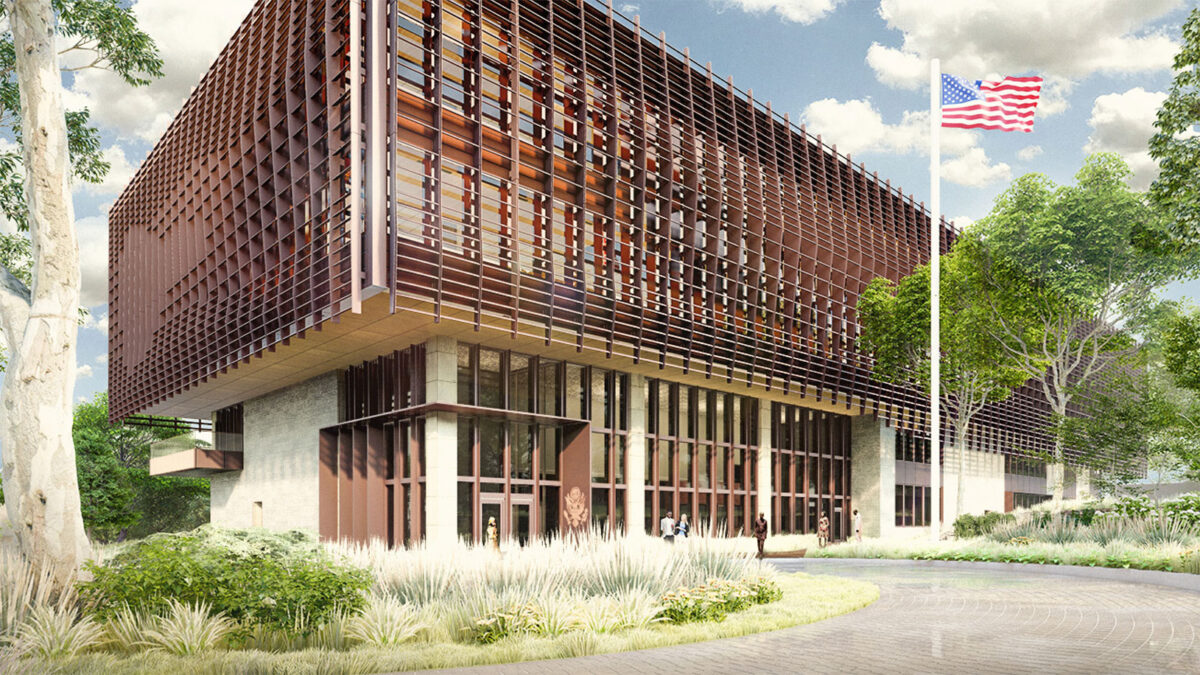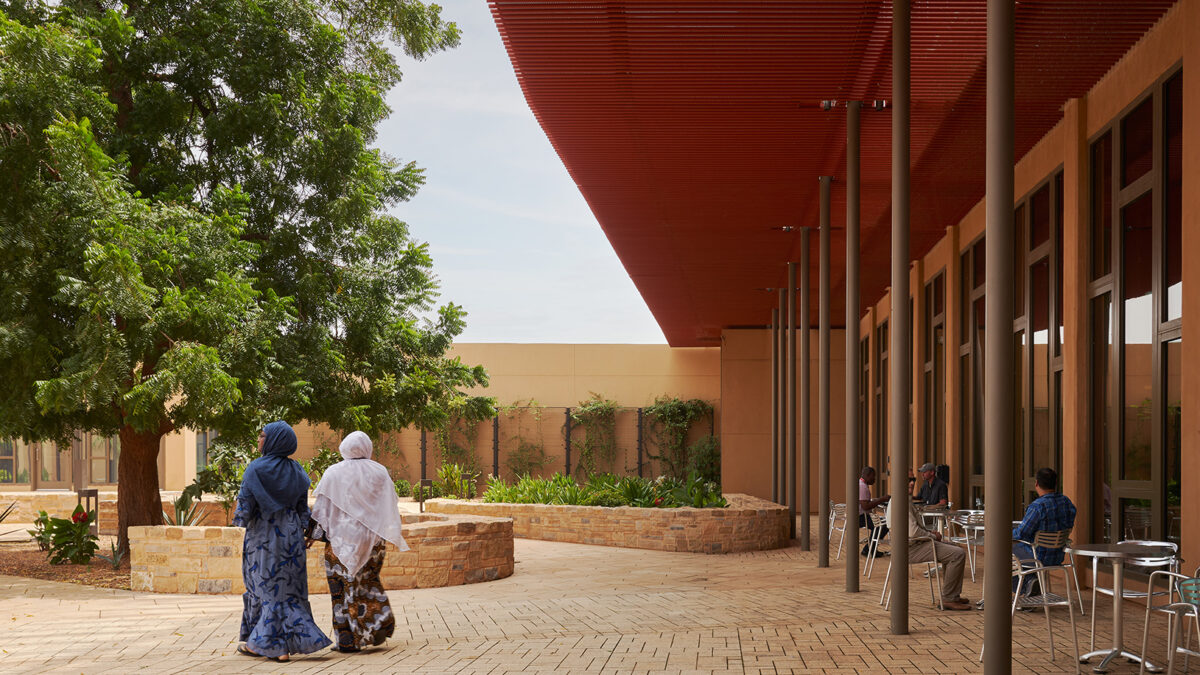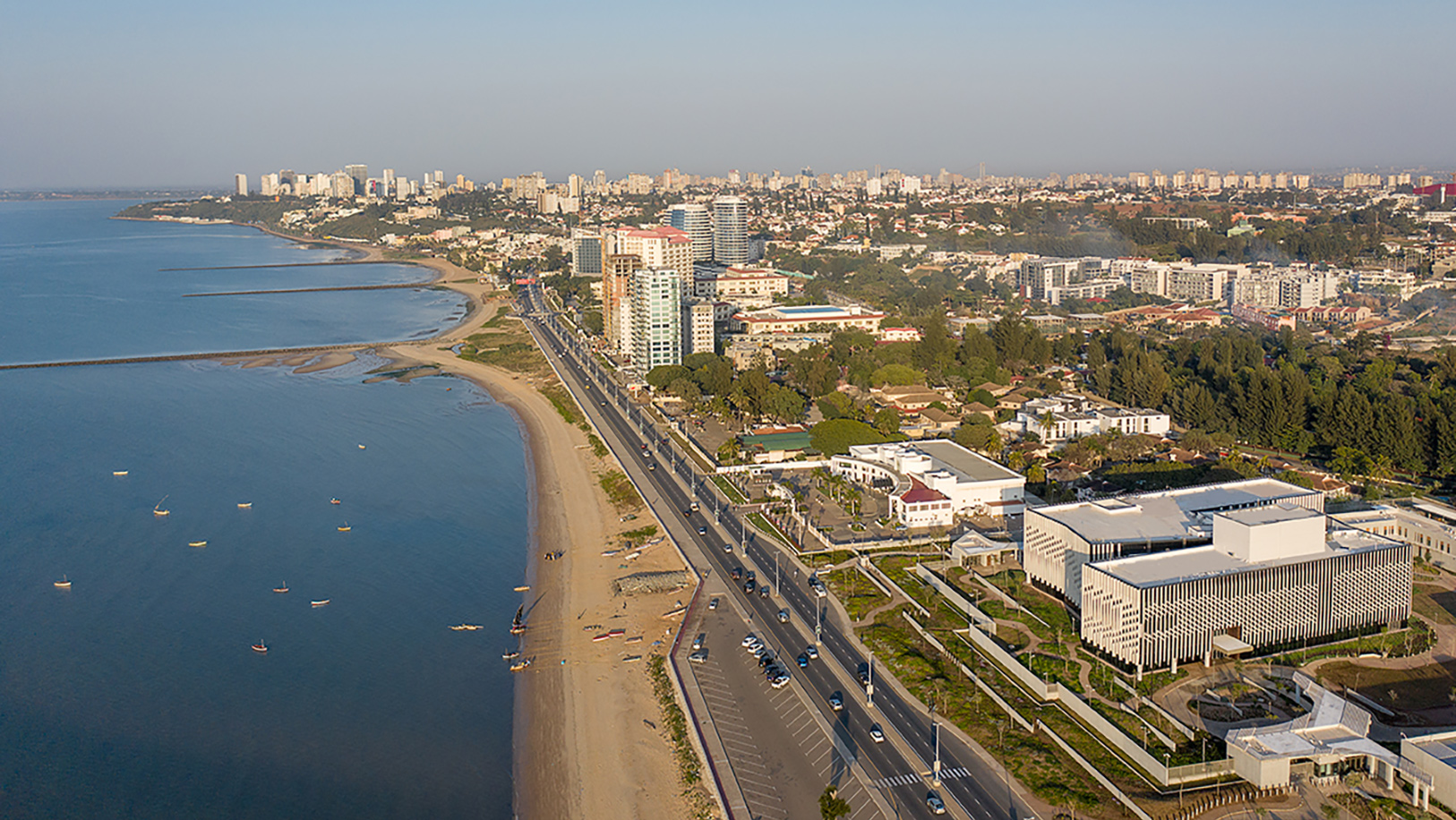
Biomes of the KwaZulul-Natal/Maputaland region shape the landscape design and helped inform three distinct planting concept areas on the U.S. Embassy campus in Maputo, Mozambique: dunes, grasslands, and wetlands. The site connects strongly to the native dune landscape along the coast by creating dune landforms and restoring native dune vegetation.
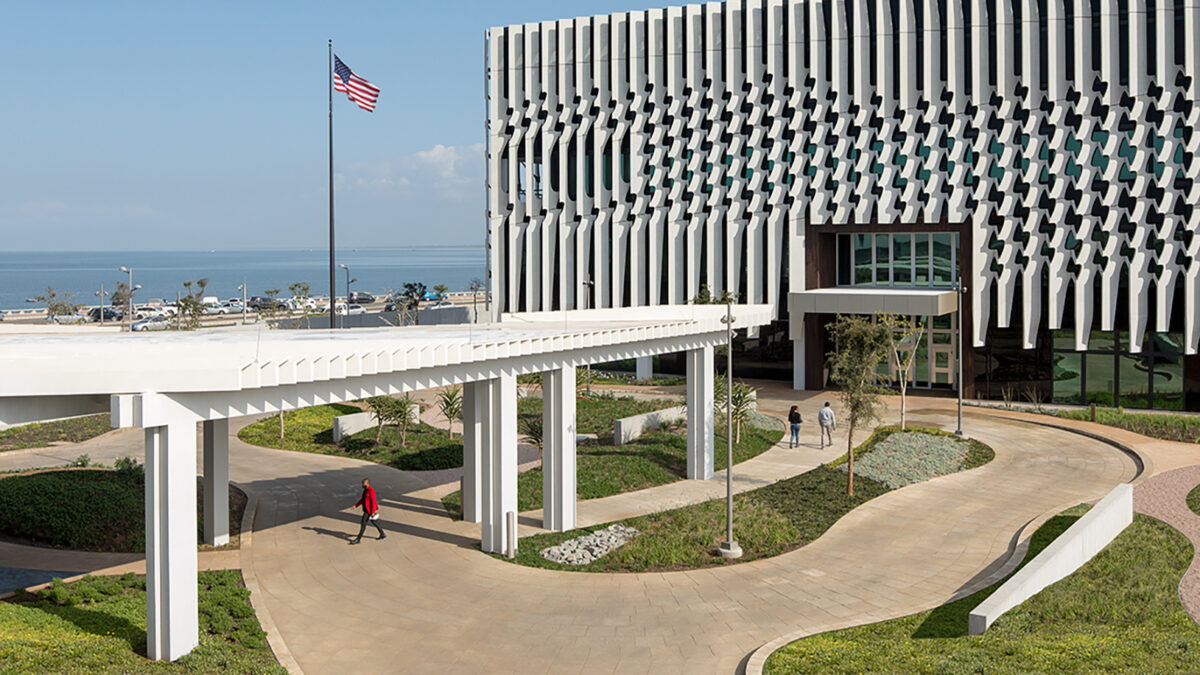
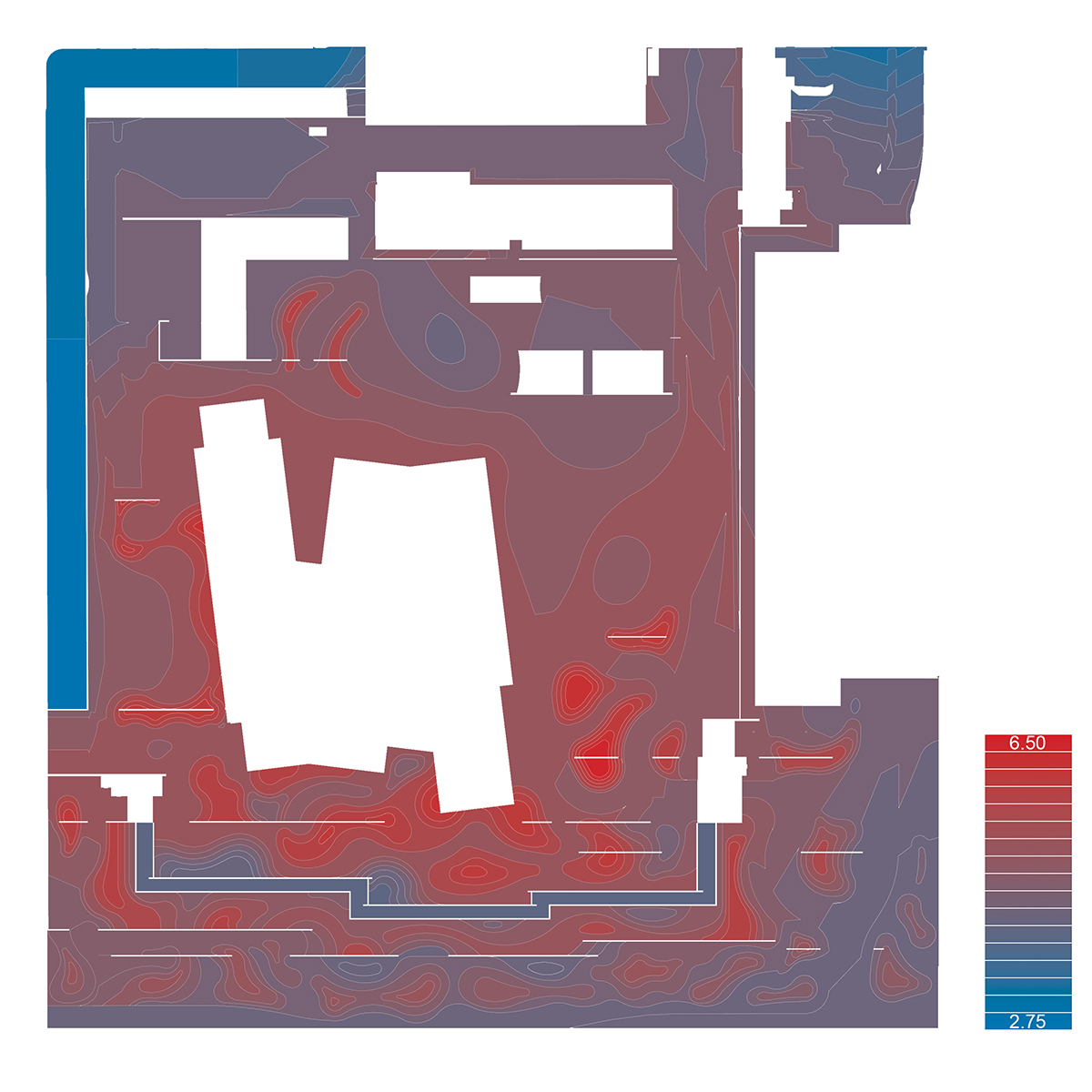
Site Grading Diagram
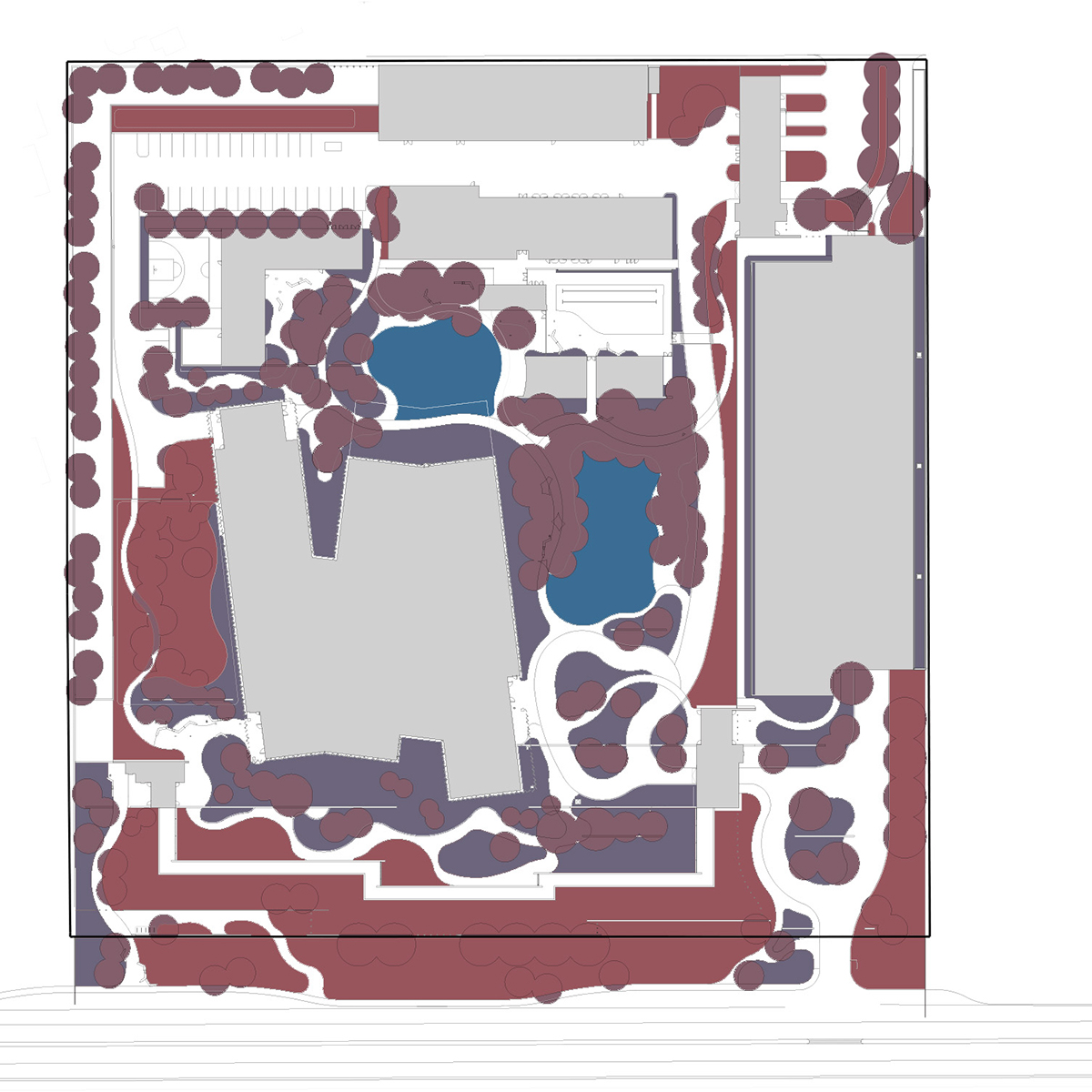
Site Irrigation Diagram
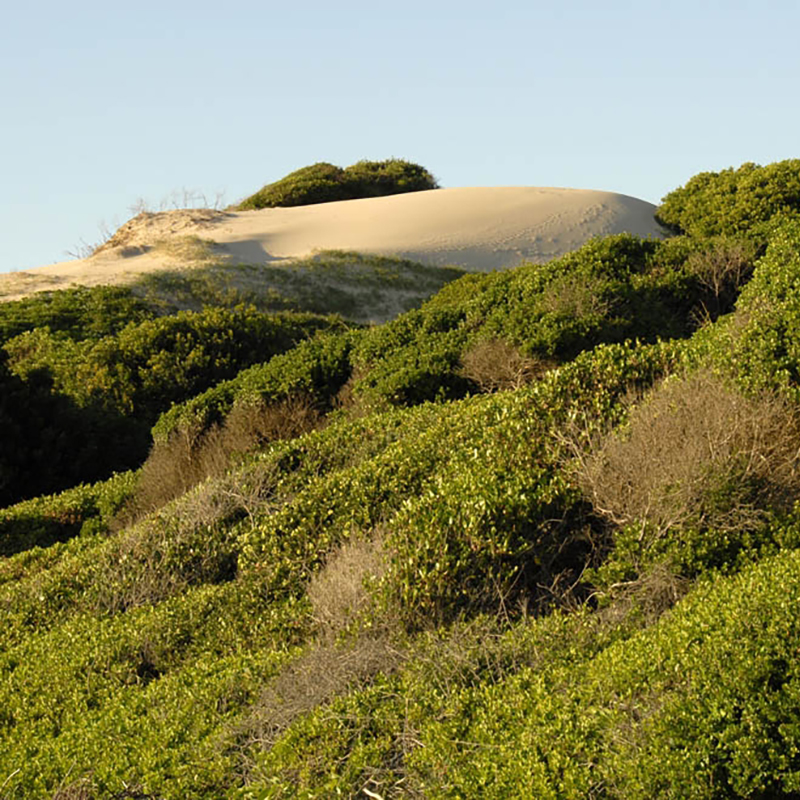
Native Sand Dunes
A multi-building complex on a 10-acre site northeast of Maputo, the Embassy is located in a rapidly developing coastal zone adjacent to the Indian Ocean. The design team was tasked with designing a complex of buildings — including the Chancery, Marine Security Guard Residence, and support buildings — while meeting the Department of State’s standards for safety and security.
The Embassy had to be a secure, modern, and environmentally adaptable platform for U.S. Diplomacy. Paintings, photography, textile, and sculpture were used to provide a cultural bridge with the host country of Mozambique. Landscape design played a critical role in the new Embassy, with site amenities centered on connecting staff and visitors to Maputo’s natural beauty and culture. Landscape features include coastal dune restoration, water-efficient native and regionally appropriate plants, a water-efficient irrigation system, and treated wastewater as the sole source for irrigation. Knot Studio designers used local species from the coastal-inland biome to surround and protect the Embassy. Designers also called for using native grassland and forest species to enable a net-zero water use environment.
